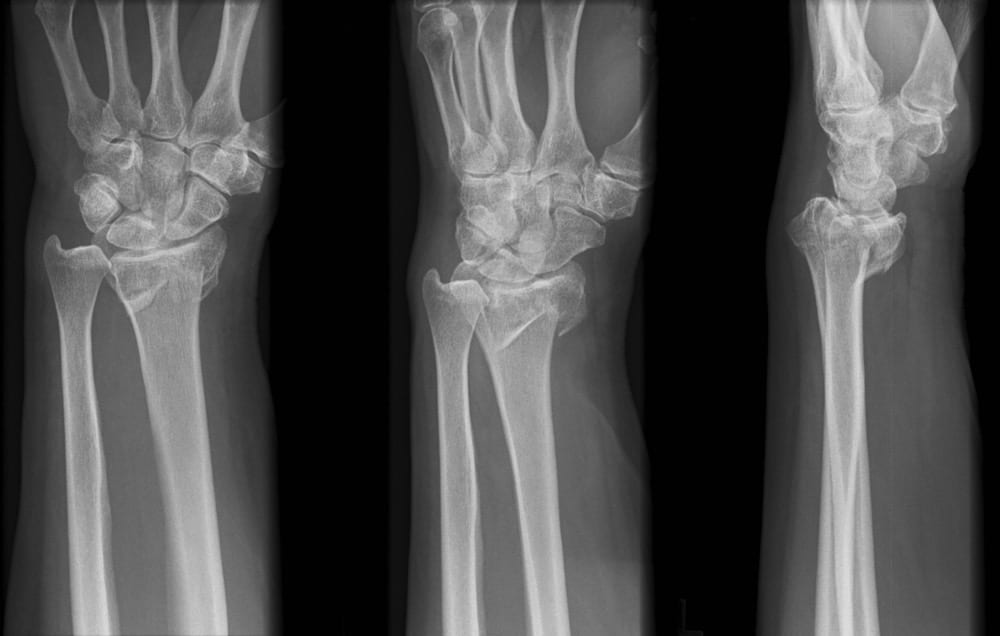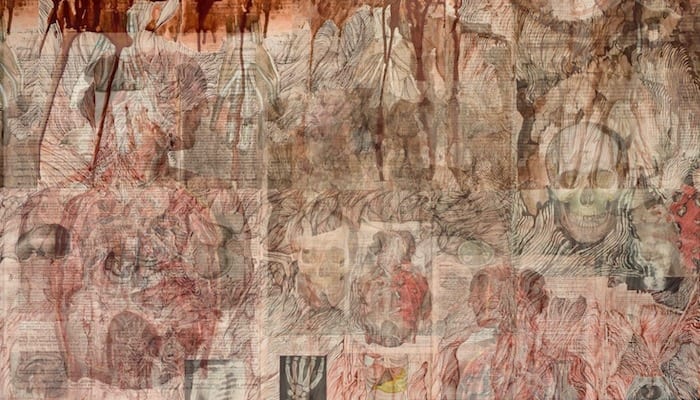Stairs versus Wrist
aka Bone and Joint Bamboozler 003
A 50 year-old woman tripped down the last 5 steps of a flight of stairs. Her left forearm bore the brunt of the impact.
Fortunately, she sustained no other significant injuries. The radiographs of her painful and swollen left wrist are shown below:

Describe the fracture?
Bamboozler Answer
There is a fracture of the volar lip of the distal radius articular surface, with volar subluxation of the radiocarpal joint along with volar displacement of the fracture fragment.
What is the eponymous name for this fracture?
Bamboozler Answer
This is a volar Barton fracture.
Described by John Rhea Barton (1794-1871) in 1838
Barton was an ambidextrous surgeon who was born, worked, and died in Pennsylvania. He spent time as a student of John Hunter in London and was renowned as a daring surgeon who could perform an osteostomy of an ankylosed hip in just seven minutes.
The volar Barton fracture is equivalent to a Smith fracture that enters the radiocarpal joint (Robert William Smith (1807 – 1873).
Dorsal Barton fractures are less common than volar fractures – and both are rare (<4% of distal radius fractures).
What the typical mechanism of injury?
Bamboozler Answer
Barton fractures result from high-energy impact transmitted to the articular surface of the radiocarpal joint (e.g. FOOSH – ‘fall onto outstretched hand‘).
The volar or dorsal rim fractures depending on whether the wrist is in volar flexion or dorsiflexion, respectively.
Alternatively, a volar rim fracture may result from tension failure and avulsion due to the pull of the strong radiocarpal ligaments when the wrist is forcefully dorsiflexed on impact.
What imaging and views are best for this assessing this injury?
Bamboozler Answer
Lateral wrist radiographs best demonstrate the degree of articular involvement and displacement.
The fracture is also easily seen on a PA radiograph of the wrist.
What specific associated injuries and complications should be considered?
Bamboozler Answer
Early complications and associated injuries:
- Carpal bone fracture or dislocation
- Nerve Injuries to the sensory branches of the radial nerve, median nerve and/or ulnar nerve
Late complications:
- Radiocarpal joint arthritis and chronic pain
What is the management of this injury?
Bamboozler Answer
Treatment of a Barton fracture may depend on the size of the fracture fragment and the degree of displacement.
Request an orthopedic review early, as operative repair is often required.
Non-displaced Barton fracture:
- consider sugar-tong splint with wrist in neutral position
Displaced Barton fracture:
- closed reduction under procedural sedation
- if stable, consider sugar-tong splint with wrist in neutral position
- if unstable or inadequately reduced, open reduction and internal fixation
Although closed reduction is sometimes successful, many experts advocate early operative intervention for all Barton fractures.
References
- Howard J. John Rhea Barton (1794–1871). LITFL 2018
- Fulford D. Robert William Smith (1807 – 1873)
- Purcell D. Minor Injuries A Clinical Guide 3e
- Sherman S. Simon’s Emergency Orthopedics 7e

CLINICAL CASES
Bone and Joint Bamboozler
Chris is an Intensivist and ECMO specialist at The Alfred ICU, where he is Deputy Director (Education). He is a Clinical Adjunct Associate Professor at Monash University, the Lead for the Clinician Educator Incubator programme, and a CICM First Part Examiner.
He is an internationally recognised Clinician Educator with a passion for helping clinicians learn and for improving the clinical performance of individuals and collectives. He was one of the founders of the FOAM movement (Free Open-Access Medical education) has been recognised for his contributions to education with awards from ANZICS, ANZAHPE, and ACEM.
His one great achievement is being the father of three amazing children.
On Bluesky, he is @precordialthump.bsky.social and on the site that Elon has screwed up, he is @precordialthump.
| INTENSIVE | RAGE | Resuscitology | SMACC
